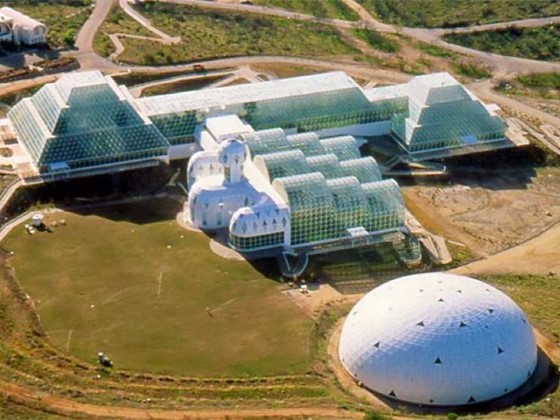Meg Buerkel Hunn, Advisory Council Chair: “Marveling at How Nature Works Together”

In the 1980s, after years of planning, 8 adults sealed themselves into a giant terrarium in Oracle, Arizona. It was a grand experiment intended to learn what might be necessary for humans to live long term on the moon or other planets. The terrarium contained 5 separate biomes: an ocean complete with a coral reef, a rainforest, a desert, a mangrove, and a massive garden. They called it Biosphere 2, begging people to ask, “Where is Biosphere 1?” which is, of course, the Earth. Last month, I got to tour the Biosphere 2, and I’m reading Rebecca Reider’s book about it, which is fascinating: the drama, the science, the history, the people! Can you imagine seven people you’d like to be locked into a 3-acre terrarium with for two whole years?
To simulate life in space, the biospherians could receive no inputs from outside except for information. Biosphere 2 had to create or recycle enough food, air and water to support not only the human biospherians, but also the plants and animals.
Imagine the process of choosing which plants and animals would be included. One example: scientists initially wanted bats to help pollinate the many plant species, but then they learned that each bat would need to consume 20 moths every night, and to do that, they had to encounter at least 200 moths each night – so bats were not amongst the Biosphere 2 creatures.
The experiment was deemed a failure in the eyes of both the scientific and journalistic communities. The people had to grow all their own food. They followed an extremely low calorie diet and nearly starved. The group divided into two factions that were at odds with each other. The rains that fell in the rainforest biome drained into the ocean biome and caused algae plumes that started killing off the coral reefs. The unexpectedly high amounts of carbon dioxide the soil microorganisms expired caused the oxygen levels to plummet inside this sealed environment to dangerous levels for humans and other animals. The lack of wind meant that the trees weren’t strong enough to sustain their own weight.
Overall, the scientific community panned the project: There were too many variables affecting every part of life and living inside, and it was nigh impossible to isolate one variable in order to scientifically study its effects.
But there was also tremendous learning. Biosphere 2 invites us to wonder at the utter interconnectedness of Biosphere 1: Planet Earth.
Sometimes I think it would be easier, in my own garden, to just grow one thing – and get really good at it. That is the way of industrial agriculture. But that is not the way of nature – in a balanced system, all things play their part. So, as I work in my garden this spring, I am also trying to notice all the other variables and creatures that are helping (and sometimes hindering) my desired outcomes: the bees who visit our blooming fruit trees, the bindweed that springs up in our mulch, the hummingbirds who flit between branches, the heat causing the kale and broccoli to flower, the young seedlings battling the New Mexico spring breezes… and I marvel at how it all works together!
May you find partners and friends (human, insect, plant, microorganism, wind, rain) that assist you in your gardens!
